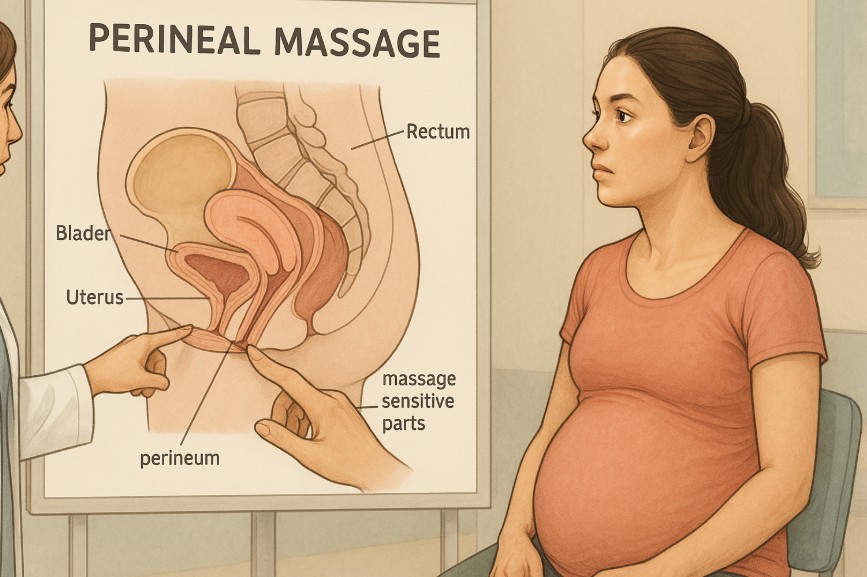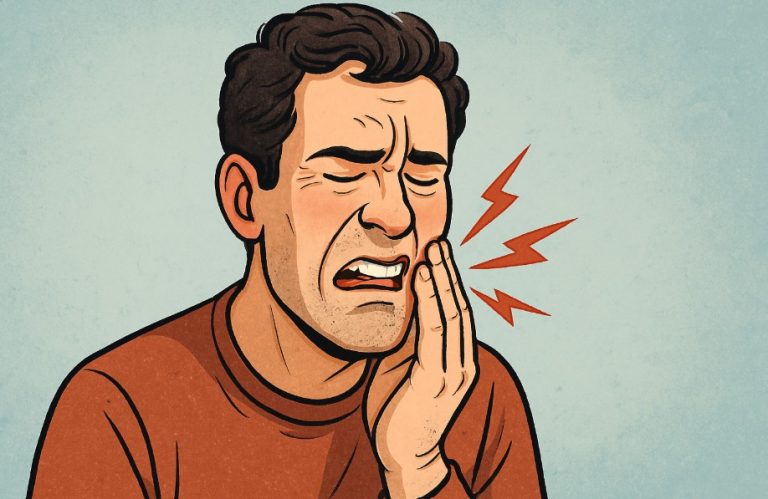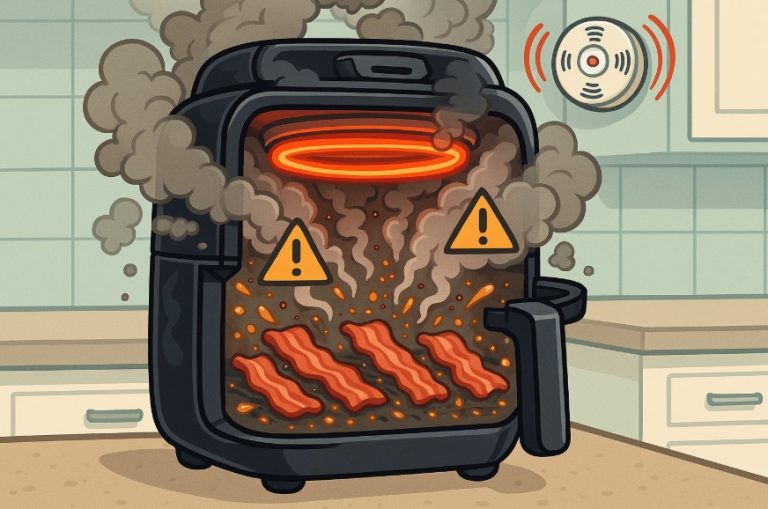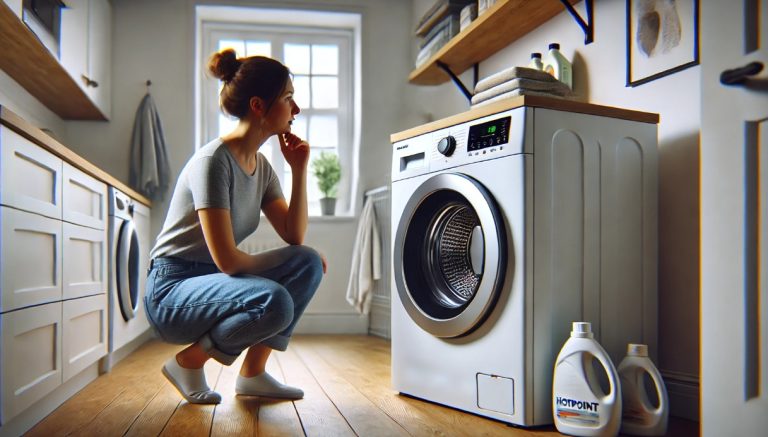Why Can’t You Do Perineal Massage Before 34 Weeks?
Perineal massage has become a widely discussed topic in antenatal care, but timing is essential. As someone preparing for childbirth, I wanted to understand why this practice is recommended only after a specific point in pregnancy.
In my search for evidence-based information, I discovered that starting too early and particularly before 34 weeks, may carry unnecessary risks. In this blog, I’ll share what I’ve learned about the timing, safety, and benefits of perineal massage, based on professional advice and clinical guidance.
What Is Perineal Massage?
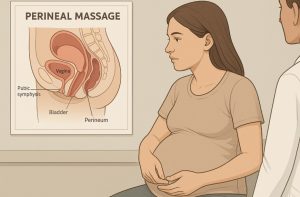
Perineal massage is a technique used to gently stretch and prepare the perineum the area of skin and muscle between the vaginal opening and the anus for childbirth. It involves using clean, lubricated fingers or thumbs to apply gentle pressure and motion to the vaginal and perineal tissues.
The massage is typically done in a U-shaped motion, pressing downward and outward to replicate the stretching sensation experienced during labour.
The purpose of this massage is to help the perineal tissues become more flexible and resilient. This can potentially reduce discomfort and the risk of tearing during a vaginal birth.
It’s generally performed from 34 weeks of pregnancy onwards and is often done at home, either by the pregnant person or with the help of a partner.
Key features of perineal massage include:
- Targeted stimulation of the perineal area
- Use of safe, natural oils for lubrication (such as almond or vitamin E oil)
- Techniques focused on gently stretching the tissue to increase elasticity
- Short sessions, usually lasting around 5 to 10 minutes
This method is particularly encouraged for first-time mothers, although women who have experienced perineal trauma in previous births may also benefit from it.
Why Is It Recommended During Pregnancy?
Perineal massage is recommended during pregnancy because it helps prepare the body for a smoother vaginal delivery.
As the perineum undergoes a significant amount of pressure and stretching during birth, particularly when the baby’s head crowns, massage can aid in softening the tissues, improving their elasticity and reducing resistance.
Medical professionals recommend the practice for a number of reasons supported by research:
- Reduced Risk of Tearing: Regular massage from 34 weeks onwards has been shown to decrease the likelihood of first- and second-degree tears during delivery.
- Lower Rates of Episiotomy: It may reduce the need for surgical cuts to the perineum during birth.
- Enhanced Confidence: Familiarising oneself with the sensation of perineal stretching can reduce anxiety and improve mental readiness for labour.
- Postnatal Comfort: Women who practise perineal massage often report less discomfort in the postpartum recovery period.
Overall, it’s a low-cost, low-risk practice that can be easily integrated into a birth preparation routine provided it’s done at the appropriate stage of pregnancy and with proper guidance.
What Are The Potential Risks Of Doing Perineal Massage Too Early In Pregnancy?
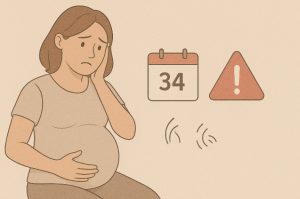
Performing perineal massage before the recommended gestational age can pose risks due to the body’s sensitivity during earlier stages of the third trimester. The uterus and cervix are still in protective mode, and unnecessary stimulation may lead to unintended consequences.
Potential risks of early perineal massage include:
- Triggering Mild Contractions: The uterus might respond to stimulation with mild, irregular contractions, which in some cases could escalate to preterm labour.
- Increased Risk of Infection: If proper hygiene is not maintained, introducing fingers into the vaginal area could transfer bacteria, increasing the likelihood of infection.
- Local Irritation: The perineal skin and tissues may not yet be ready to stretch, making them more susceptible to inflammation, swelling, or microtears.
For these reasons, healthcare providers typically advise against starting perineal massage before 34 weeks unless there is a clinical recommendation to do so under supervision.
How Does Perineal Massage Help In Childbirth Preparation?
Perineal massage serves as a preventative technique to improve outcomes during vaginal delivery. The practice is designed to help the body adapt gradually to the pressures of childbirth, especially in the second stage of labour when the baby’s head crowns and stretches the perineum.
The massage replicates the sensation of stretching that occurs during birth, helping the tissues become more accustomed to pressure. This can reduce the likelihood of sudden tearing and increase maternal confidence in managing the sensations of labour.
Evidence-based benefits of perineal massage include:
- A lower chance of requiring an episiotomy
- Reduced incidence of first- and second-degree tears
- Decreased post-birth perineal pain and discomfort
- Improved control and coordination of pushing during labour
Although results may vary from person to person, studies have consistently shown that consistent perineal massage can positively impact birth outcomes, particularly for first-time mothers.
What Changes Occur In The Body After 34 Weeks That Make Massage Safer?
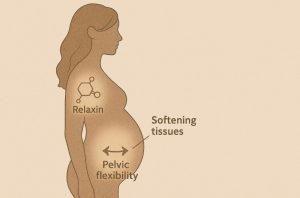
After 34 weeks of pregnancy, several important physiological and hormonal changes take place that enhance the safety and effectiveness of perineal massage. These changes are crucial for labour preparation and create an environment where massage can be safely introduced.
- Increased Relaxin Production: This hormone softens the ligaments, joints, and connective tissues around the pelvis, making the perineal area more adaptable to stretching.
- Cervical Softening (Ripening): The cervix begins to prepare for dilation, and the surrounding tissues become more elastic and responsive.
- Decreased Uterine Reactivity: As the uterus becomes more tolerant of minor stimulation, the chances of triggering premature contractions decrease.
These developments collectively support the idea that after 34 weeks, the body is entering the final phase of pregnancy where preparation for birth can safely include targeted practices such as perineal massage.
How Do Healthcare Professionals View The Timing Of Perineal Massage?
Most midwives, obstetricians, and pregnancy health organisations support the practice of perineal massage after the 34-week mark. This recommendation is grounded in both research evidence and clinical experience, which suggests that early massage does not provide additional benefit and may lead to avoidable risks.
The NHS and organisations such as the Royal College of Obstetricians and Gynaecologists (RCOG) provide general guidelines indicating:
- Perineal massage can be started from 34 weeks in low-risk pregnancies
- The practice should be avoided in women with signs of preterm labour, vaginal bleeding, or infections
- Women with high-risk pregnancies should consult their healthcare provider before beginning
Clinicians often include perineal massage as part of a broader antenatal education programme, where they also teach breathing techniques, pelvic floor exercises, and other methods for optimising birth outcomes.
What’s The Right Way To Do Perineal Massage After 34 Weeks?
Performing perineal massage correctly after 34 weeks of pregnancy can offer real benefits in preparing the body for childbirth. While the technique itself is relatively simple, understanding each stage of the process is important to ensure comfort, safety, and effectiveness.
Below is a detailed, step-by-step explanation of how to do perineal massage properly, with minimal use of bullet points and a consistent professional tone.
Step 1: Wash Your Hands Thoroughly
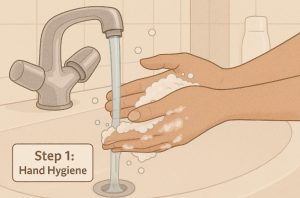
The first and most important step before beginning perineal massage is ensuring that your hands are completely clean. The perineal and vaginal areas are particularly sensitive to bacteria during pregnancy, and introducing even small amounts of germs can result in discomfort or infection.
Begin by washing your hands under warm running water with an antibacterial soap, making sure to clean around your nails and under your fingertips. Dry your hands with a fresh towel or disposable tissue. Hygiene is crucial, and this step should never be skipped, even if the massage is being done frequently.
Step 2: Trim And Prepare Fingernails
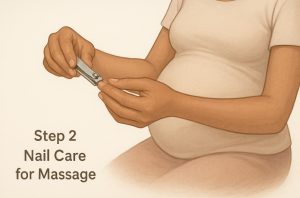
Long or uneven fingernails can scratch the perineal tissue, which becomes more sensitive as pregnancy progresses. Before starting the massage, trim your nails short and file the edges to ensure they’re smooth.
Avoid using artificial nails or extensions, as they may introduce unwanted bacteria or increase the risk of accidental injury. This preparation will make the massage process safer and more comfortable, especially when using your thumbs to apply gentle pressure to internal and external areas of the perineum.
Step 3: Use A Safe, Natural Oil
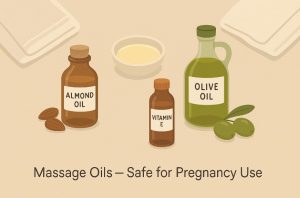
Lubrication is essential to reduce friction during massage and to prevent discomfort. Choosing the right oil is equally important. Natural, unscented oils are generally considered safest.
Almond oil, olive oil, coconut oil, and vitamin E oil are commonly recommended due to their moisturising properties and low risk of allergic reactions.
Apply a small amount of oil to your clean thumbs and to the perineal area. You may need to reapply during the massage if you feel resistance or dryness. Always test the oil on a patch of skin first if you’ve never used it before to check for any sensitivity.
Step 4: Find A Comfortable Position
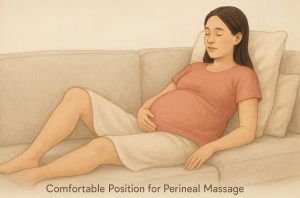
Comfort and relaxation are essential for effective perineal massage. The position you choose should allow easy access to the perineum and enable you to stay relaxed throughout the process. Many women choose to recline on a bed or sofa with knees bent and legs apart.
You may also sit propped up on pillows or lean back against a wall in a semi-squatting pose. For some, standing with one foot elevated on a chair or the edge of a bath provides a practical angle. The key is to avoid any position that creates strain or tension in the lower back or thighs.
Step 5: Insert Your Thumbs And Apply Gentle Pressure
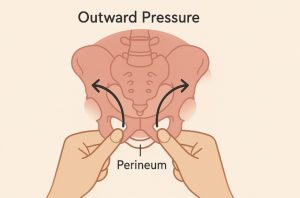
Once you’re in position and relaxed, use your lubricated thumbs to gently insert about two to three centimetres into the vaginal opening. The thumbs should be angled downward toward the rectum, not upwards into the vagina. Gently press down and outwards, aiming for a slow and steady stretch of the perineal tissue.
You should feel a slight pulling or tingling sensation, which indicates that the tissue is beginning to stretch. This part of the massage should never be painful. If it is, reduce the pressure or pause the massage. Over time, your perineum will become more accustomed to the stretch, and the sensation should become more manageable.
Step 6: Massage In A U-Shaped Motion

With steady pressure applied, start moving your thumbs in a gentle, U-shaped motion along the lower vaginal wall and around the perineum. The movement should be smooth, slow, and controlled.
The aim is to replicate the sensation and stretch that the perineum will experience during childbirth, helping to prepare the tissue and improve its elasticity.
You may notice mild discomfort or resistance initially, especially if this is your first time. However, regular practice helps to reduce this feeling over time, making the tissue more responsive and flexible.
Step 7: Continue For 5 To 10 Minutes And Know When To Stop
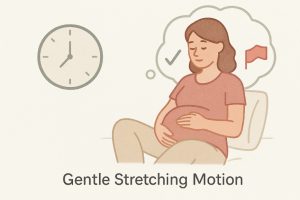
Each session should last between five to ten minutes. There’s no need to rush or force progress; consistency is more important than intensity. You may perform the massage three to four times a week, or daily if it feels comfortable. It’s also important to know when to stop.
If you experience any sharp pain, vaginal bleeding, cramping, or unusual discharge, discontinue the massage immediately and contact your healthcare provider.
As the weeks progress, many women report a noticeable difference in how the tissue responds, with less tension and greater flexibility. This is a good indication that your efforts are preparing your body for birth.
Can Perineal Massage Replace Other Methods Of Birth Preparation?
While perineal massage is a useful tool, it is not a substitute for other birth preparation methods. A comprehensive approach that includes both physical and mental preparation tends to offer the best outcomes for labour and delivery.
Complementary birth preparation methods include:
- Pelvic Floor Exercises (Kegels): These strengthen the muscles that support the uterus, bladder, and rectum.
- Breathing Techniques: Learning how to manage breath during contractions can ease discomfort and improve oxygen flow.
- Visualisation And Mental Rehearsal: Visualising a calm birth can help reduce anxiety and build a positive mindset.
- Antenatal Classes: These provide valuable information and practical techniques for labour management.
Used in combination, these practices enhance physical readiness, mental clarity, and confidence in the lead-up to birth.
Are There Alternatives For Preparing The Perineum Before 34 Weeks?
For women who are eager to start preparing for childbirth before 34 weeks but want to avoid the risks associated with early perineal massage, there are several safe and effective alternatives.
These include:
- Gentle Stretching Exercises: Positions such as squatting, butterfly stretch, and yoga poses like child’s pose can improve pelvic flexibility.
- Kegel Exercises: Strengthening the pelvic floor can enhance muscle tone and coordination, aiding in both delivery and postpartum recovery.
- Warm Compresses: Applying gentle warmth to the perineal area may help increase blood flow and relaxation.
- Breath Awareness: Learning to control breathing can build relaxation and bodily awareness that is helpful during labour.
These approaches can form a foundational routine early in the third trimester and be complemented with perineal massage after 34 weeks.
How Often Should You Perform Perineal Massage Once You Begin?
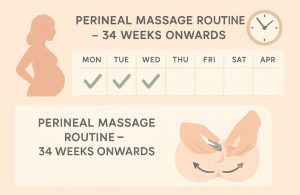
After beginning perineal massage at 34 weeks, the frequency can vary based on individual comfort and lifestyle. Many women find that performing the massage 3 to 4 times per week provides a balance between consistency and comfort.
- Duration: Sessions typically last 5 to 10 minutes
- Monitoring: Pay attention to how your body responds and adjust the technique as needed
- Stopping Criteria: Discontinue if you experience spotting, cramping, or irritation
Women who feel confident and notice improved flexibility may reduce the frequency closer to their due date, while others may continue until labour begins. Always listen to your body and speak with your midwife if you have concerns.
What Are the Key Differences Before And After 34 Weeks For Perineal Massage?
| Aspect | Before 34 Weeks | After 34 Weeks |
| Uterine Sensitivity | Higher, risk of contractions | Lower, more stable |
| Hormonal Support | Not fully present | Active hormone changes |
| Tissue Softness | Less elastic | Increasing elasticity |
| Safety for Massage | Not advised | Generally considered safe |
| Medical Recommendations | Avoided | Recommended if no complications |
Conclusion
Having explored the research and professional recommendations, it’s clear that perineal massage can be a valuable tool in preparing for childbirth but only when timed appropriately. Starting after 34 weeks aligns with key physiological changes in the body, making the practice both safe and effective.
I’ve found that understanding these details not only empowers me to make informed decisions but also gives me greater confidence in my birth preparation. As always, it’s best to consult your midwife before beginning.
FAQs About Perineal Massage Timing
Can Perineal Massage Start Earlier If There’s A Medical Reason?
In certain cases, healthcare providers might suggest earlier massage, but this is rare and based on individual medical needs. Always consult a professional.
Does Perineal Massage Actually Prevent Tearing During Birth?
Research shows that regular perineal massage from 34 weeks onwards can reduce the risk of severe tearing, especially for first-time mothers.
Are There Any Women Who Shouldn’t Do Perineal Massage At All?
Yes, women with placenta previa, vaginal infections, or preterm labour risk should avoid it unless advised otherwise by a healthcare provider.
How Long Does Perineal Massage Take To Show Benefits?
Benefits usually become noticeable within 2–3 weeks of regular massage, especially in terms of flexibility and comfort.
What Oils Are Safe To Use During Perineal Massage?
Natural oils such as almond oil, vitamin E oil, or olive oil are commonly used. Always do a patch test before use to avoid allergic reactions.
Should I Consult My Midwife Before Starting Massage?
Yes, it’s a good idea to discuss your plan with your midwife or doctor, especially if you have a high-risk pregnancy or other complications.
Is It Safe To Do Perineal Massage Daily?
It can be done daily after 34 weeks if it feels comfortable. However, 3 to 4 times per week is usually sufficient for most women.

